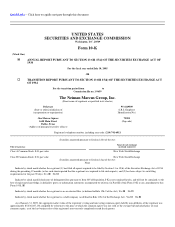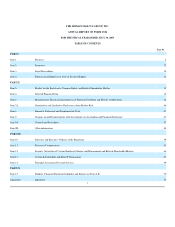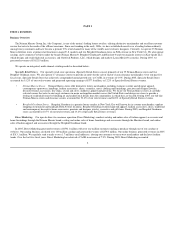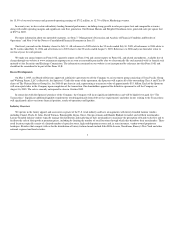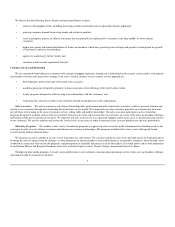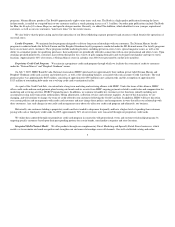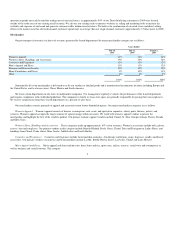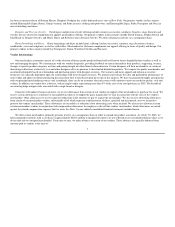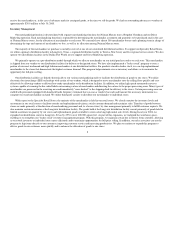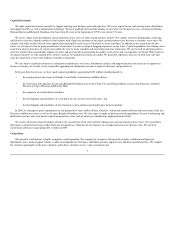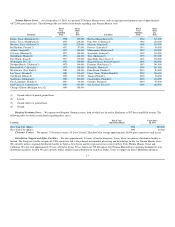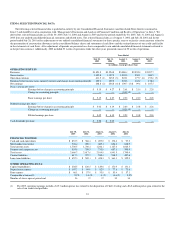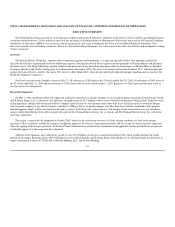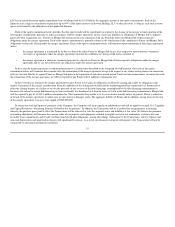Neiman Marcus 2004 Annual Report Download - page 12
Download and view the complete annual report
Please find page 12 of the 2004 Neiman Marcus annual report below. You can navigate through the pages in the report by either clicking on the pages listed below, or by using the keyword search tool below to find specific information within the annual report.
Capital Investments
We make capital investments annually to support our long-term business goals and objectives. We invest capital in new and existing stores, distribution
and support facilities as well as information technology. We have gradually increased the number of our stores over the past ten years, growing our full-line
Neiman Marcus and Bergdorf Goodman store base from 28 stores at the beginning of 1995 to our current 37 stores.
We invest capital in the development and construction of new stores in both existing and new markets. We conduct extensive demographic, marketing
and lifestyle research to identify attractive retail markets with a high concentration of our target customers prior to our decision to construct a new store. We
compete with other retailers for real estate opportunities principally on the basis of our ability to attract customers. In addition to the construction of new
stores, we also invest in the on-going maintenance of our stores to ensure an elegant shopping experience in our stores. Capital expenditures for existing stores
range from minor renovations of certain areas within the store to major remodels and renovations and store expansions. We are focused on operating only in
attractive markets that can profitably support our stores and are focused on maintaining the quality of our stores and, consequently, our brand. With respect to
our major remodels, we only expand after extensive analysis of our projected returns on capital. We generally experience increases in both total sales and
sales per square foot at stores that undergo a remodel or expansion.
We also believe capital investments for information technology in our stores, distribution facilities and support functions are necessary to support our
business strategies. As a result, we are continually upgrading our information systems to improve efficiency and productivity.
In the past three fiscal years, we have made capital expenditures aggregating $453 million related primarily to:
the construction of new stores in Orlando, Coral Gables, San Antonio and Boca Raton;
the renovation and expansion of our main Bergdorf Goodman store in New York City and Neiman Marcus stores in San Francisco, Newport
Beach, Las Vegas, Houston and Beverly Hills;
the expansion of our distribution facilities;
the development and installation of a new point-of-sale system in our retail stores; and
the development and installation of new financial systems and non-merchandise procurement modules.
In 2006, we anticipate capital expenditures for our planned new stores in Boca Raton, Charlotte, Austin and suburban Boston and renovations of the San
Francisco and Houston stores as well as the main Bergdorf Goodman store. We also expect to make technology related expenditures for new warehousing and
distribution systems and a new human capital management system, both of which are scheduled for implementation in 2006.
We receive allowances from developers related to the construction of our stores thereby reducing our cash investment in these stores. We record these
allowances as deferred real estate credits which are recognized as a reduction of rent expense on a straight-line basis over the lease term. We received
construction allowances aggregating $26.1 million in 2005.
Competition
The specialty retail industry is highly competitive and fragmented. We compete for customers with specialty retailers, traditional and high-end
department stores, national apparel chains, vendor-owned proprietary boutiques, individual specialty apparel stores and direct marketing firms. We compete
for customers principally on the basis of quality and fashion, customer service, value, assortment and
9
•
•
•
•
•


